Disclosure: This article contains affiliate links. We may earn a commission from purchases at no extra cost to you, which helps our travel content.
There's something about the steam rising from a natural hot spring that reminds me of my days exploring the limestone caves back in Wales—that same mysterious veil between worlds, only infinitely more comfortable. After attending the International Fire & Rescue Conference in Tokyo last month, I carved out a weekend to visit Hakone, a place that's been on my list since I first developed my fascination with Japanese tea culture. As a firefighter accustomed to high-pressure situations, I've learned that true luxury isn't about extravagance—it's about finding spaces where time slows down and every detail is considered. Hakone's exclusive ryokans offer precisely this balance, with their meticulous service, private onsen baths, and kaiseki meals that showcase seasonal ingredients with the same precision and respect that Japanese tea ceremonies demand. For couples seeking a winter retreat, these traditional inns offer a glimpse into a world where luxury means mindfulness rather than excess.
The Art of Selecting Your Ryokan
Choosing the right ryokan in Hakone is not unlike selecting the perfect tea—it requires consideration of subtle characteristics that might go unnoticed by the untrained eye. After researching dozens of properties, I narrowed my selection to those with private in-room onsen (hot spring baths), authentic kaiseki dining, and views of either Mount Fuji or Hakone's lush valleys.
Gora Kadan, a former imperial retreat, topped my list for its seamless blend of traditional aesthetics with modern comforts. The minimalist design principles—what the Japanese call ma (negative space)—create an atmosphere of tranquility that's particularly welcome after Tokyo's sensory overload. At Ginyu Ryokan, the architectural integration with the mountainside reminded me of how the best cave systems work with rather than against their natural surroundings.
For my stay, I selected Hakone Ginyu, where each room features a private open-air bath overlooking the valley. The rate (starting around ¥80,000 per night) includes breakfast and dinner, making it surprisingly reasonable for the experience delivered. While researching accommodations, I found my Japan travel guide invaluable for understanding the etiquette expectations and terminology specific to ryokans.

💡 Pro Tips
- Book at least 3 months in advance for winter stays, especially for rooms with the best views
- Request a room with an outdoor rather than indoor private bath for the authentic experience
- Consider half-board (breakfast and dinner included) packages as ryokans are often isolated from restaurants
The Ritual of the Onsen
The Japanese approach to bathing mirrors their tea ceremony in many ways—both are ritualistic practices that demand presence and respect for tradition. As someone who's spent considerable time studying tea ceremonies across Asia, I found the onsen experience similarly meditative.
Before entering the bath, there's the cleansing ritual at the washing station—a thorough scrubbing that would make my fire station captain proud with his insistence on spotless equipment. Only when completely clean do you enter the mineral-rich waters, which in Hakone are often rich in sulfur (recognizable by that distinctive eggy aroma that reminds me of certain cave systems).
My first evening at the ryokan, I slipped into my private rotenburo (outdoor bath) as snow began to fall. The contrast between the 42°C water and the crisp winter air created that perfect tension of opposites. Steam rose around me like the morning fog in South Wales' Ogof Ffynnon Ddu caves, and I found myself experiencing that rare state of complete presence.
For those new to onsen culture, I'd recommend bringing a quick-dry travel towel. While ryokans provide towels, having your own ultra-absorbent option is helpful for moving between indoor and outdoor spaces in winter. The lightweight material dries quickly even in the humid bathroom environment.

💡 Pro Tips
- Always wash thoroughly before entering the onsen waters
- Bring a small hand towel to modestly cover yourself when walking between bathing areas
- Hydrate well before and after your bath, as the hot mineral waters can be dehydrating
Kaiseki: A Culinary Journey Through Seasons
If there's one aspect of ryokan culture that parallels the precision of firefighting drills, it's the meticulous preparation and presentation of kaiseki cuisine. This multi-course traditional dinner is less a meal and more a narrative told through food—each dish representing the season, the region, and the chef's artistic vision.
At Hakone Ginyu, dinner began at precisely 6:30pm when my room attendant (nakai-san) transformed my living area into a dining space. The first course—a delicate arrangement of winter vegetables shaped to resemble Mount Fuji—arrived on a handmade ceramic plate that seemed to capture the essence of the season itself.
What followed was a progression of small, exquisite dishes: a clear soup with yuzu fragrance that reminded me of the citrus notes in certain Taiwanese oolongs; sashimi so fresh it seemed to melt on contact; and a hot pot featuring local mushrooms and Hakone beef. Each course was paired with sake selections that complemented rather than overwhelmed the flavors.
The standout was a dish featuring local wasabi root freshly grated tableside—a world apart from the paste we get abroad. I've since purchased a traditional wasabi grater to attempt recreating this experience at home, though sourcing real wasabi root in California remains challenging.
The meal concluded with a simple but perfect bowl of matcha tea, bringing the experience full circle to my longstanding appreciation of Japanese tea culture.

💡 Pro Tips
- Don't rush your kaiseki meal—each course tells part of a story and deserves contemplation
- Ask your server about local ingredients you're unfamiliar with—they're usually delighted to explain
- Take photos before disturbing the artistic presentation, but be discreet and never use flash
Tea Ceremonies and Mountain Views
While Hakone isn't primarily known as a tea region (unlike Shizuoka or Uji), the ryokans here honor the tea tradition with the same reverence I've encountered in more famous tea destinations. At Gora Kadan, I arranged for a private tea ceremony overlooking their winter garden—an experience that connected deeply with my lifelong interest in tea culture.
The tea master, Tanaka-san, had studied the art for over 30 years, and her movements possessed that same deliberate precision I've observed in the best firefighters—no wasted motion, every action purposeful. The ceremony took place in a small tatami room with a tokonoma (alcove) displaying a scroll with winter-themed calligraphy and a simple ikebana arrangement of pine branches.
What made this ceremony special was Tanaka-san's willingness to explain each step, from the heating of the water (never quite boiling for matcha) to the significance of turning the chawan (tea bowl) before drinking. The matcha itself was exceptional—vibrant green with a perfect froth and balance of bitterness and umami.
For tea enthusiasts visiting Japan, I recommend bringing a travel tea set that allows you to properly prepare tea in your room or even outdoors while enjoying Hakone's views. Mine has accompanied me from Taiwan's high mountain tea farms to Sri Lanka's estates, and now to the ryokans of Hakone.
After the ceremony, I hiked a portion of the Old Tokaido Road, where ancient cedar trees line the historic path. The combination of physical exertion in the crisp mountain air followed by relaxation in the onsen creates a balance that feels quintessentially Japanese.

💡 Pro Tips
- Request a tea ceremony experience when booking your ryokan stay—many offer this but don't advertise it prominently
- Visit the Hakone Open Air Museum between ryokan stays for an impressive collection of outdoor sculptures against mountain backdrops
- Take the time to walk portions of the Old Tokaido Road for glimpses of Edo-period Japan
Beyond the Ryokan: Hakone's Hidden Treasures
While the luxury of your ryokan might tempt you to never leave its confines, Hakone offers experiences that complement the serenity of ryokan life. As someone who typically balances relaxation with exploration (you can take the caver out of the caves, but...), I made time for several excursions.
The Hakone Open-Air Museum merges two seemingly contradictory elements—art and nature—into a harmonious whole. Walking among large-scale sculptures with Mount Fuji in the distance provided a different kind of mindfulness than the ryokan, but one equally valuable. The Picasso Pavilion houses an impressive collection, but it was the outdoor works by Henry Moore that most captivated me.
For those interested in geology (a natural extension of my caving background), the Owakudani volcanic valley offers a glimpse into the geothermal activity that powers Hakone's hot springs. The 'black eggs' cooked in the sulfuric waters are said to add seven years to your life—a claim I approached with the same good-natured skepticism I apply to firefighting superstitions.
The most unexpected discovery was Hakone Venetian Glass Museum, where delicate artworks are displayed in a European-style garden. The contrast between this Western aesthetic and the Japanese surroundings created a fascinating cultural dialogue that reminded me of how my grandfather's tea importing business connected disparate worlds.
To navigate between these sights, the Hakone Free Pass offers excellent value, covering the scenic railway, cable cars, ropeways, and boats that make up Hakone's charming transportation network.

💡 Pro Tips
- Use the Hakone Free Pass for unlimited travel on local transportation for 2-3 days
- Visit Owakudani early in the morning when visibility is best for views of Mount Fuji
- Schedule museum visits between ryokan stays rather than trying to rush back for meal times
Final Thoughts
As I soaked in my private onsen on my final night, watching snow settle on cedar branches while sipping a cup of hojicha tea, I reflected on how Hakone's luxury ryokans offer something increasingly rare in our world—genuine presence. The experience isn't about excess but about attention—to seasons, to traditions, to the precise temperature of bath water and tea. For couples seeking reconnection in our distracted age, few experiences offer the same opportunity for shared mindfulness. The price point may be considerable, but unlike many luxury experiences that fade quickly from memory, the ryokan stays with you—in the way you prepare tea, in your appreciation for seasonal ingredients, in moments of stillness. As we firefighters say about our most challenging rescues: it's not about how long you were there, but about being fully there when it mattered. In Hakone's ryokans, being fully present is not just possible—it's inevitable.
✨ Key Takeaways
- Book your ryokan at least 3 months in advance for winter visits to secure rooms with the best views
- Budget approximately ¥80,000-120,000 per night for the full experience including meals
- Balance ryokan relaxation with cultural exploration of Hakone's museums and natural wonders
- Request special experiences like private tea ceremonies when booking your stay
📋 Practical Information
Best Time to Visit
December through February for winter atmosphere, November for autumn colors
Budget Estimate
¥80,000-120,000 per night for luxury ryokans (including breakfast and dinner)
Recommended Duration
2-3 nights minimum to fully appreciate the ryokan experience
Difficulty Level
Easy








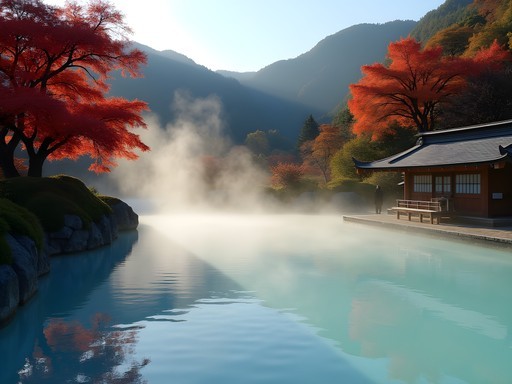

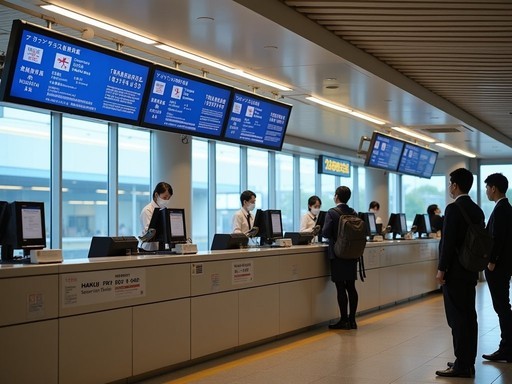
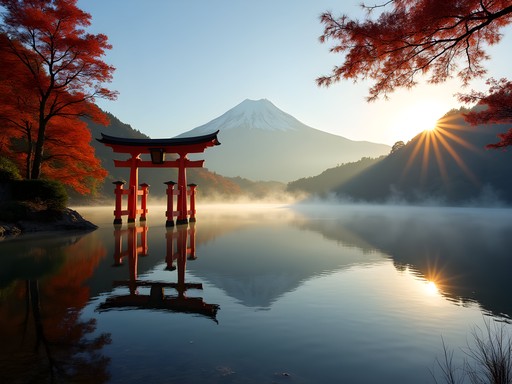

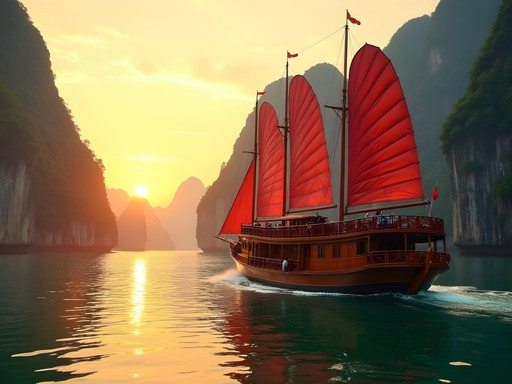

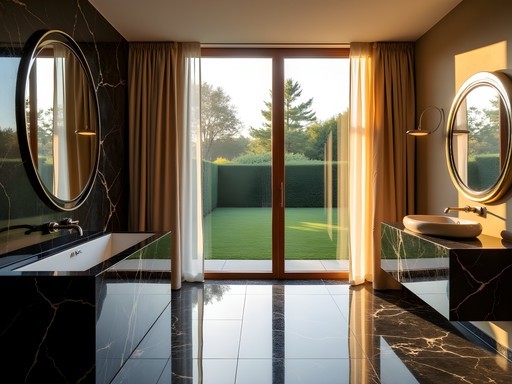
Comments
exploremaster
Those kaiseki meals look incredible! Food porn at its finest!
springpro
Planning a trip for December - are the outdoor baths still enjoyable in winter? And any ryokan recommendations that won't completely destroy my savings?
George Hayes
Winter is actually the BEST time for onsen! There's nothing like soaking in steaming water while snowflakes fall around you. For more affordable options, look at Ichinoyu chain or Fukuzumiro - traditional experience without the premium price tag. Book directly for better rates!
dreamone
Just got back from Hakone last month and your post brought it all rushing back! We stayed at Kinnotake Tonosawa and the private cedar bath on our balcony was pure heaven. The staff folded our yukatas into perfect little packages each day and the kaiseki dinner was like edible art. We used the Hakone Free Pass to get around which was super convenient for the ropeway and pirate ship. My tip: don't try to rush through Hakone in one day like some do - the whole point is to slow down!
islandmood
First timer here! How strict is the onsen etiquette? I'm a bit nervous about making mistakes...
dreamone
Don't worry! The basics are simple - shower thoroughly before entering, no swimsuits, and keep your small towel out of the water. Staff at good ryokans are super understanding with foreigners. Just follow what others do!
islandmood
Thanks! That makes me feel better about trying it.
Jose McDonald
Jacob, you absolutely nailed the ryokan experience! I stayed at Gora Kadan last spring and that transition from the bustling Tokyo streets to the tranquility of Hakone was mind-blowing. Did you try the early morning onsen dip? There's something magical about being alone in the steaming waters while watching the sunrise over Mt. Fuji. The kaiseki dinner was a revelation - each dish telling a story about the season. Definitely one of those experiences that stays with you long after you've returned home!
exploremaster
Gora Kadan is on my bucket list! Worth the splurge?
Jose McDonald
Absolutely worth it for a special occasion! Just book WAY in advance, especially if you want a room with a private bath.
bluehero
Those private onsens with mountain views are EVERYTHING! Your photos brought back so many memories from my trip last year!
Hunter Thompson
Brilliant write-up on Hakone, Jacob! I went the budget route when I visited last month - stayed at a small family-run ryokan that was a fraction of the price of the luxury spots. While I missed out on the private onsen experience, the public ones were an adventure in themselves! I was nervous about the etiquette but found Japanese people to be incredibly forgiving of my obvious foreigner mistakes. The Hakone Free Pass was an absolute lifesaver for getting around - that little mountain railway, cable car, and pirate ship combo is such a unique way to see the area. Did you make it to the Open Air Museum? The Picasso exhibition blew my mind - not what I expected to find in rural Japan!
Jacob Elliott
Thanks Hunter! I did make it to the Open Air Museum - those sculptures against the mountain backdrop were incredible. Great shout on the Hakone Free Pass too, definitely the way to go for exploring the area!
skymood
Those views are incredible! Saving this for my Japan trip planning.
smartpro
Great post! I'm planning a trip to Japan next year and want to include Hakone. For someone with tattoos, how strict are the high-end ryokans about the no-tattoo policy? I've heard mixed things about whether private onsens bypass this issue.
Hunter Thompson
Not Jacob, but I've got several tattoos and just returned from Japan. The higher-end places with private onsens are definitely more accommodating. I stayed at Ginyu in Hakone and they were totally fine with it in the private bath. Public areas can still be an issue though. I always travel with my waterproof tattoo covers just in case. They've saved me from awkward situations multiple times!
smartpro
Thanks for the tip! Will definitely look into booking somewhere with a private onsen then.
sunnypro
OMG those kaiseki meals look INCREDIBLE! 😍 I'm drooling over here! Did you have a favorite dish from all the seasonal specialties?
Jacob Elliott
The matsutake mushroom soup was life-changing! So simple but the depth of flavor was incredible. Also loved the grilled black cod with miso.
Venture X
Premium card with 2X miles, $300 travel credit, Priority Pass